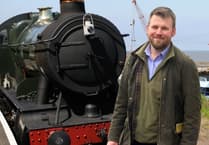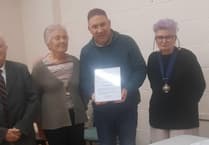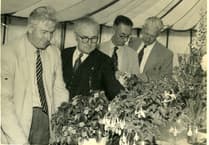ONE of Watchet’s earliest industries was the weaving woollen cloth and during the 17th century packs of this distinguished fabric were regularly shipped around the world.
Watchet Blue cloth was thought to have been dyed with the juice of the locally picked whortle-berries and it’s recorded that in 1553 Watchet Blue cloth was used to make sailors’ uniforms for an ill-fated expedition to China led by Sir Hugh Willoughby.
In 1649 King Charles I wore a Watchet Blue wool waistcoat as he walked to the scaffold to his execution after the English civil war. It was said the garment prevented him shivering with cold, which could have been mistaken for him trembling with fear.
Later, it’s believed that many yards of the Watchet Blue cloth was ordered to make uniforms for the Confederate army in the American Civil War. A relative of General Robert E Lee was said to live nearby and funded the cost of the uniforms.
Our story continues with the visit by Queen Catherine on her way home from Plymouth. It is said that it was Catherine who started the English tradition of afternoon tea, coming from a warm country to cold medieval England and in need of warmth and sustenance. And, of course, it’s a tradition we still enjoy today.
It is said that the Queen visited Watchet in late November around the time of her birthday, November 25. Could it be possible that she wanted to have a warm woollen cloak made of Watchet Blue cloth? Or did she desire, as has been suggested, some pantaloons made for the king? Alas, we will never know.
It became a tradition every year, around the time of the November 25, for townsfolk to gather in the evening in little groups in pubs and hostelries for cakes and cider, and the ‘Caturn’s Night’ tradition was born. Long may it continue - and if I know Watchet folk, it certainly will.
** A minute-by-minute guide to all the fun is in this week’s Free Press (November 12)




